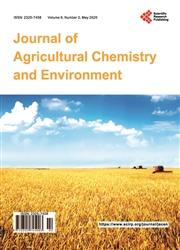Addition of Thiourea Host Monomer to Polymer Flocculants to Improve Selectivity of Phosphate Sorption
引用次数: 0
Abstract
Inorganic phosphate is a common nutrient that is applied as a fertilizer to both agricultural fields as well as urban settings such as private yards, public parks and other urban landscaping. While phosphate typically binds tightly to soil, movement of phosphate off of application sites can occur through soil erosion. The soil and its bound phosphate can then end up in surface waters such as rivers and lakes. Phosphate found in surface water bodies exists both as bound to the suspended clay as well as that free in solution. Elevated phosphate concentration in surface waters can lead to algal blooms and eutrophication. While the phosphate bound to clay in suspension in surface water bodies can be removed by commercially available polymer flocculants, the phosphate that is free in solution is more challenging as it is usually found in low concentrations and other anionic salts are generally present in higher concentrations. To remove phosphate from contaminated water systems, where other anions exist at higher concentrations, it is favorable to have a method of removal that is selective for phosphate. As a proof of principle, thiourea derivatized polymer flocculants were examined for the selective removal of phosphate in the presence of competing anions. The polymer flocculants exhibited selectivity for phosphate through hydrogen bonding and were effective at removing up to 43% of phosphate from simulated wastewater. Computational studies and 1H NMR were used to investigate the selectivity of the thiourea monomer for phosphate over competing anions such as chloride and sulfate.在聚合物絮凝剂中加入硫脲主体单体提高磷酸盐吸附选择性
无机磷酸盐是一种常见的营养素,可作为肥料应用于农田和城市环境,如私人庭院、公共公园和其他城市景观。虽然磷酸盐通常与土壤紧密结合,但磷酸盐可能会通过土壤侵蚀而离开施用点。土壤及其结合的磷酸盐最终会进入河流和湖泊等地表水。在地表水体中发现的磷酸盐既存在于悬浮粘土中,也存在于溶液中。地表水中磷酸盐浓度升高可导致藻类水华和富营养化。虽然表面水体中悬浮在粘土上的磷酸盐可以通过市售聚合物絮凝剂去除,但溶液中游离的磷酸盐更具挑战性,因为它通常以低浓度存在,而其他阴离子盐通常以较高浓度存在。为了从污染的水系统中去除磷酸盐,当其他阴离子以更高的浓度存在时,有一种对磷酸盐有选择性的去除方法是有利的。作为原理的证明,硫脲衍生的聚合物絮凝剂在存在竞争阴离子的情况下对磷酸盐的选择性去除进行了研究。聚合物絮凝剂通过氢键对磷酸盐表现出选择性,并能有效去除模拟废水中高达43%的磷酸盐。计算研究和1H NMR用于研究硫脲单体对磷酸盐的选择性,而不是竞争性阴离子,如氯化物和硫酸盐。
本文章由计算机程序翻译,如有差异,请以英文原文为准。
求助全文
约1分钟内获得全文
求助全文

 求助内容:
求助内容: 应助结果提醒方式:
应助结果提醒方式:


